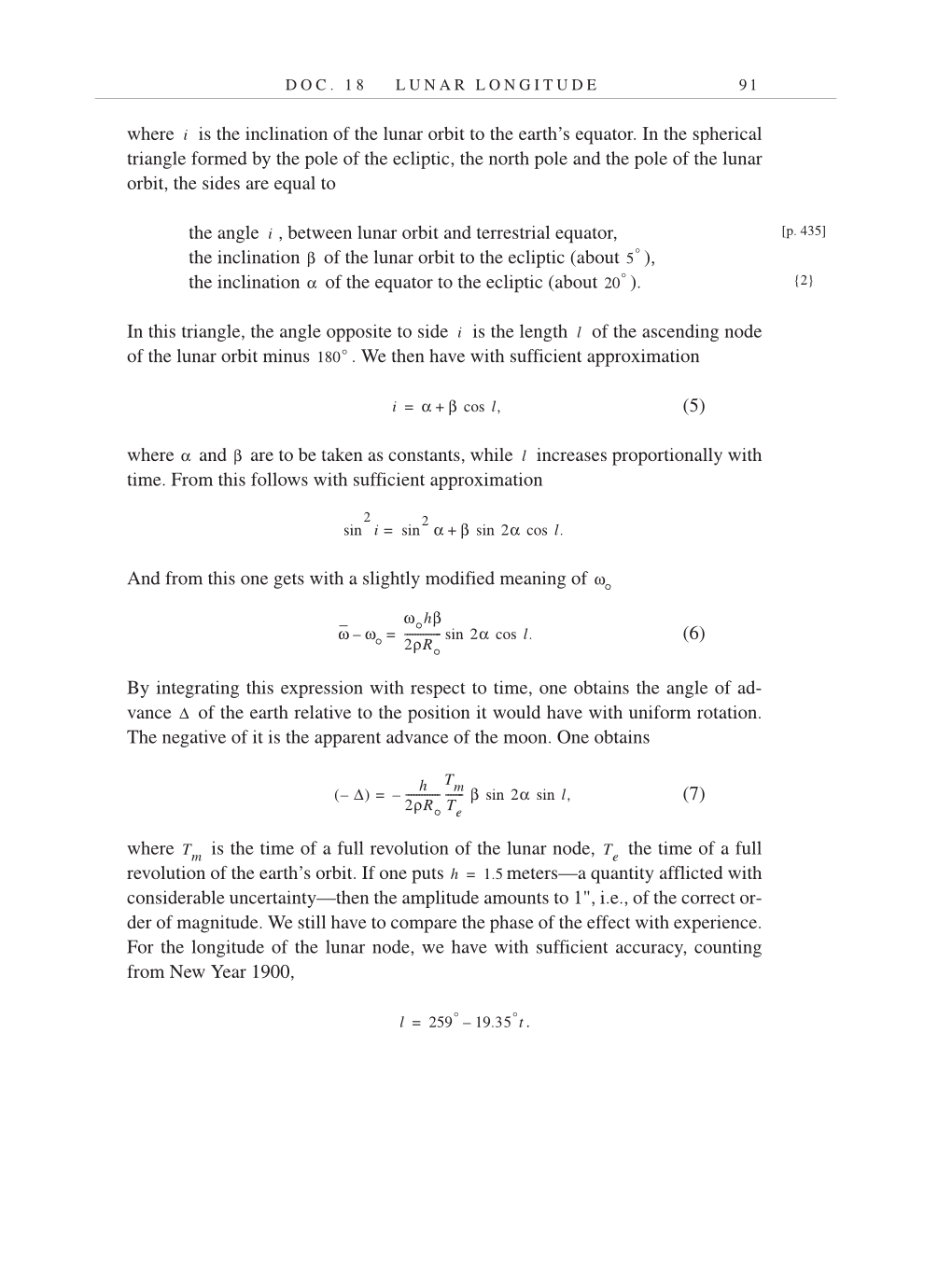D O C . 1 8 L U N A R L O N G I T U D E 9 1
where is the inclination of the lunar orbit to the earth’s equator. In the spherical
triangle formed by the pole of the ecliptic, the north pole and the pole of the lunar
orbit, the sides are equal to
the angle , between lunar orbit and terrestrial equator,
the inclination of the lunar orbit to the ecliptic (about ),
the inclination of the equator to the ecliptic (about ).
In this triangle, the angle opposite to side is the length of the ascending node
of the lunar orbit minus . We then have with sufficient approximation
(5)
where and are to be taken as constants, while increases proportionally with
time. From this follows with sufficient approximation
And from this one gets with a slightly modified meaning of
(6)
By integrating this expression with respect to time, one obtains the angle of ad-
vance of the earth relative to the position it would have with uniform rotation.
The negative of it is the apparent advance of the moon. One obtains
(7)
where is the time of a full revolution of the lunar node, the time of a full
revolution of the earth’s orbit. If one puts meters—a quantity afflicted with
considerable uncertainty—then the amplitude amounts to 1", i.e., of the correct or-
der of magnitude. We still have to compare the phase of the effect with experience.
For the longitude of the lunar node, we have with sufficient accuracy, counting
from New Year 1900,
.
i
[p. 435] i
β
5°
α
20°
{2}
i l
180°
i α β l, cos + =
α β l
i α β 2α l. cos sin +
2
sin =
2
sin
ω
°
ω ω
°
ω
°
hβ
2ρR
°
------------- -
2α l. cos sin = –
Δ
( Δ) –
h
2ρR
°
-------------
Tm
Te
------ -
β 2α l, sin sin – =
Tm Te
h 1.5 =
l
259° 19.35°t
– =
